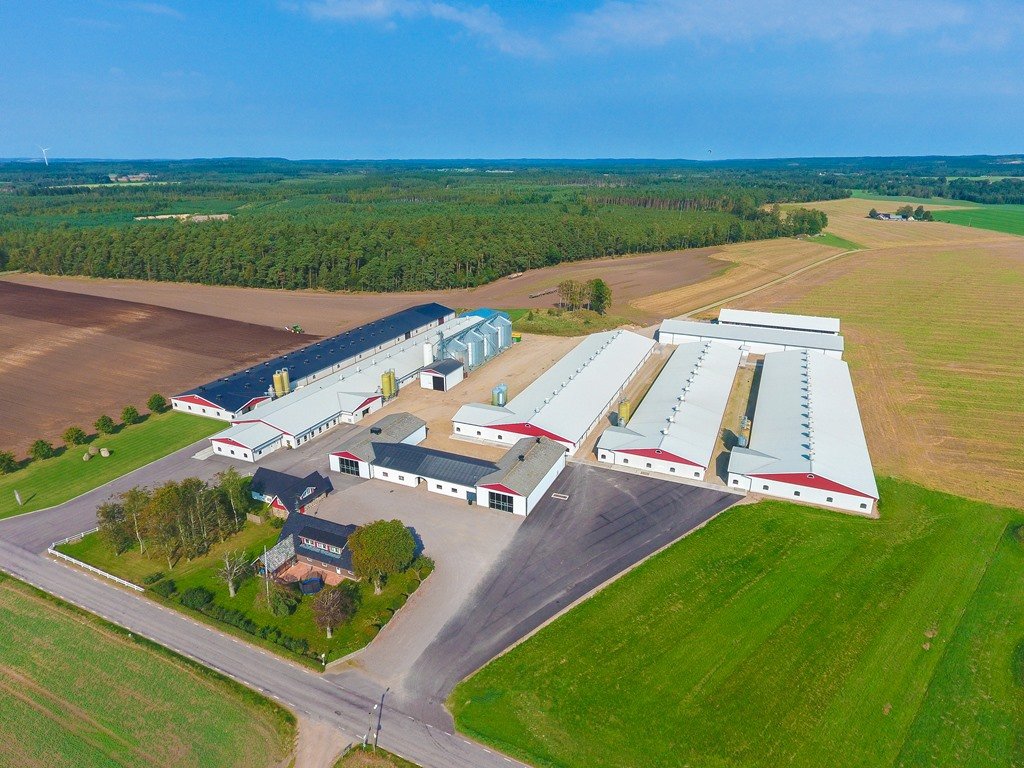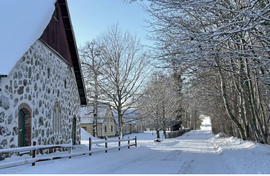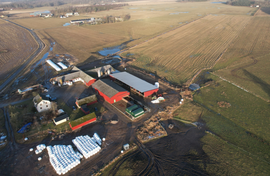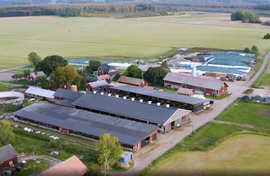About Sweden
The Kingdom of Sweden (Konungariket Sverige) is a constitutional monarchy. With a total area of nearly 450,000 km², Sweden is within Europe a big country . Sweden has nearly 9 million inhabitants. This means that, on average, there only 20 people per km². The area of uncultivated land in Sweden comprises 31%, including its more than 96,000 lakes. Woodlands cover 58% of the country, and cultivated lands cover 11%. Sweden is subdivided into three main types of countryside: Norrland in the north, Svealand in the centre, and Götaland in the south. Norrland is mountainous with infinite forests and many rivers and lakes. Norrland comprises nearly two-thirds of Sweden’s total area. Svealand, in central Sweden, has a slightly opener and more friendly character. Götaland, in the south, has a very diverse countryside with, i.a. in the southernmost province of Skåne, flourishing farmlands and beech woods. The west coast is flat with occasional stretches of sandy beaches. It also has a skerry coast with many islets and inlets. Here are the big lakes of Vänern and Vättern. Vänern is the third largest lake in Europe. Sweden has nearly 9 million inhabitants. The Swedish population belongs to the most characteristic representatives of the Nordic race, whose features are: a long, slim figure, narrow skull, blonde hair, and blue eyes. There has been relatively little mixing of races in Sweden.
In the past hundred years, Sweden has developed from a relatively poor agricultural country into a modern industrialized society. Sweden is now among the most prosperous countries in the world, with high incomes and good social security benefits. Since 1842, Sweden has had compulsory education. Primary education extends over a period of ten years, from the ages of 6 to 16. In 1962, the ten-year primary school system was definitively introduced. Nearly all schools are governed by local authorities, although there are private schools as well. It is striking that pupils do not receive report grades until their eighth school year. Moreover, as early as the third or fourth year, they begin learning English as a foreign language. After primary school, nearly all Swedes attend some kind of secondary education. Some then prepare for university studies; others combine theory and practice in order to learn a trade. The period of study at university and in higher professional education is about four years. All forms of public education, even in higher education, are free. Currently, about 90% of the population belongs to the Evangelical-Lutheran State Church. Many people go to church only for reasons of tradition, such as at Christmas, Easter, baptism, confirmation, and marriage. Yet, despite the low rate of attendance, the Church does not have to fear for its existence. Every Swede, whether religious or not, helps to keep the Church going by paying a voluntary contribution. Besides, the Church is the chief landowner in the country. The Church mainly owns forestland for the production of wood. Apart from its religious function, the Church also functions as a Civil Register Office. It records births, deaths and marriages. Since 1991, the tasks of Register Office have been taken over by Skattemyndigheten (Inland Revenue Service). In addition to the State Church, there are also about 100,000 Roman Catholics in Sweden. Only a small part of them are of Swedish extraction. The majority are immigrants from i.a. Spain, Portugal, Italy, and Poland. Apart from this, there are only some smaller churches and religious communities: Pentecostal Church (Filadelfia), Missionskyrka, Congregationalists, members of the Orthodox Church, Baptists and Methodists.
Sweden, like its neighbour Norway, is influenced by the Warm Gulf Stream. The average annual temperatures in regions such as North-Russia, Alaska, and Greenland, which lie at the same latitude, are therefore considerably higher. The south has a straightforward maritime climate due to the Warm Gulf Stream and so it has a bit more rainfall than the rest of Sweden. If there is snowfall, it often does not stay on the ground very long. The harbours remain ice-free, too. The south has four to five summer months, the central region has three to four, and the north has one to three. The west coast between Malmo and the Norwegian border gets most rainfall, ± 700 mm per year. The east of Sweden has only 300-400 mm per year. As in Norway and Finland, there are two special phenomena to be observed in Sweden: the midnight sun and the northern light. The midnight sun is a very popular attraction to many travellers. The further you travel towards the North Pole in summer, the higher and longer the sun keeps shining without disappearing below the horizon.
Swedish farms are mostly family operations, and the lands are owned by those who cultivate it. The cooperative system, for purposes of sales, purchases, and lending, is highly sophisticated. Three quarters of all agricultural products are processed or marketed via cooperative organizations. About 7.5% of the total land area can be used economically. Still, it manages to meet 80% of domestic demand. In the south, many crops are cultivated, such as all sorts of cereals, sugar beets, and beans. In central Sweden, the staple crop is grain (cereals), and further to the north, feed crops are grown. Livestock farming takes place in the south, on the narrow stretch of coastal land along the Gulf of Bothnia, and along the river valleys. Livestock farming is mainly concentrated on cattle farming, for the production of meat and dairy. Hogs (pigs), poultry, and sheep are kept as well. Animal welfare is an important issue.
Land prices are in the attractive range between EUR 8000 and EUR 36,000 per hectare, depending on location, parcel size, and precipitation. Leasing of land is common in Sweden. The supply of land exceeds the demand, so that people are relaxed about contracts. Swedish people close lease contracts on an annual basis, but these contracts are renewed automatically. The Swedish generally keep their word. On the whole, farms have sufficient lands at their disposal, but there is always the option of buying feed. Most farmers buy concentrate feed or residual products. Grains are never a problem; you can buy them wet, dried, and crushed. Maize yields vary per region. Maize is grown in Skane and Halland, but, further up north, the situation is not so good: supplies are limited and transports tend to make it unprofitable. Brewer’s grains are widely available, but this is not always the case for pressed pulp. In the Skane area down south, yields of grass (3 crops) are between 8 and 11 tonnes of dry matter per hectare. The yields of maize, too, are between 8 and 11 tonnes of dry matter per hectare and, though yields do not vary much in these regions, the reliability of ripening does. Especially along the coast, the chances of night frost are lower and maize attains a higher starch-content. So the chances of getting a good product are better there than further up north.



